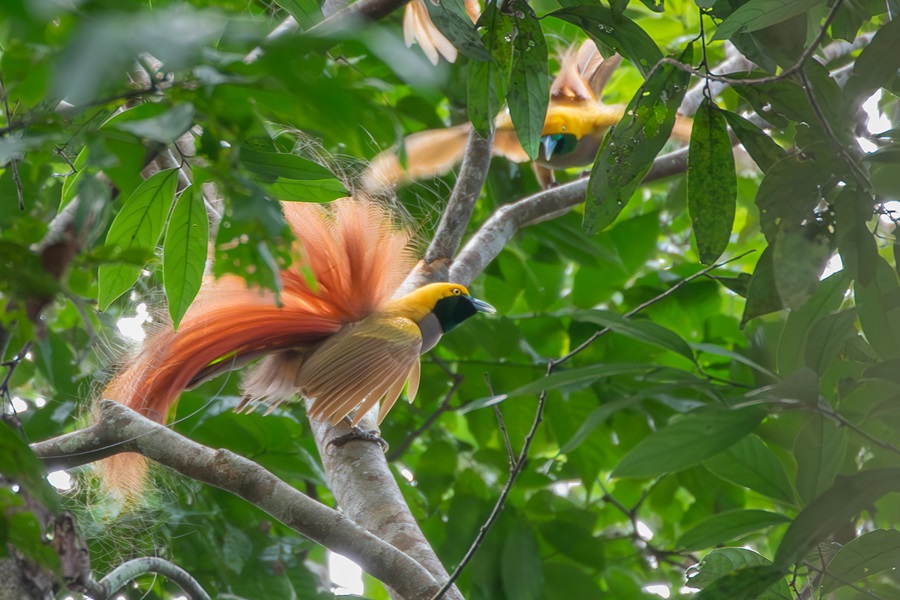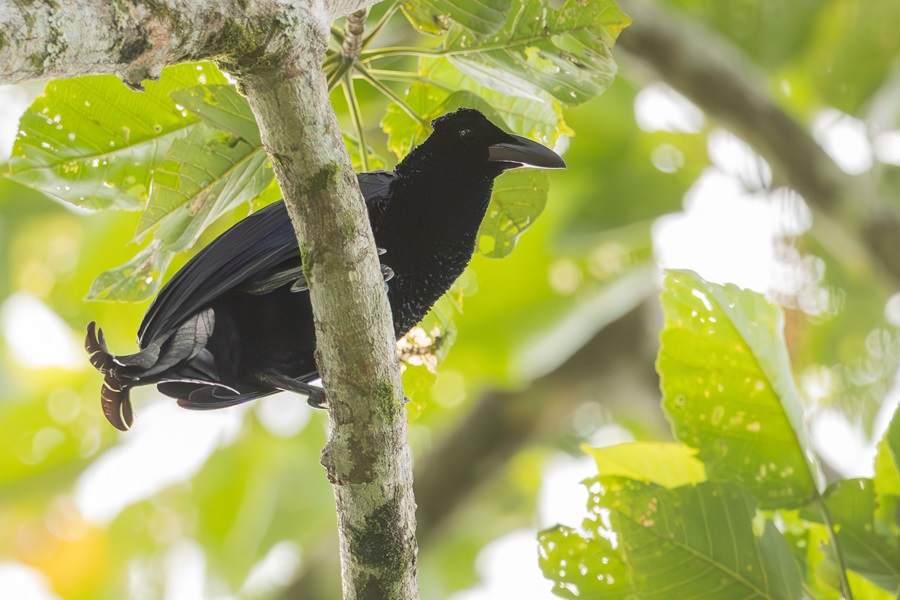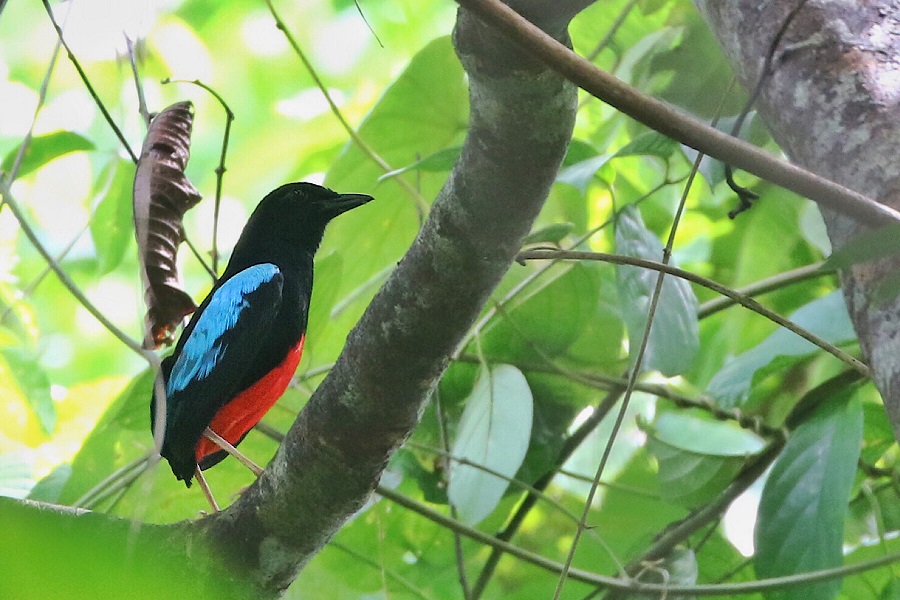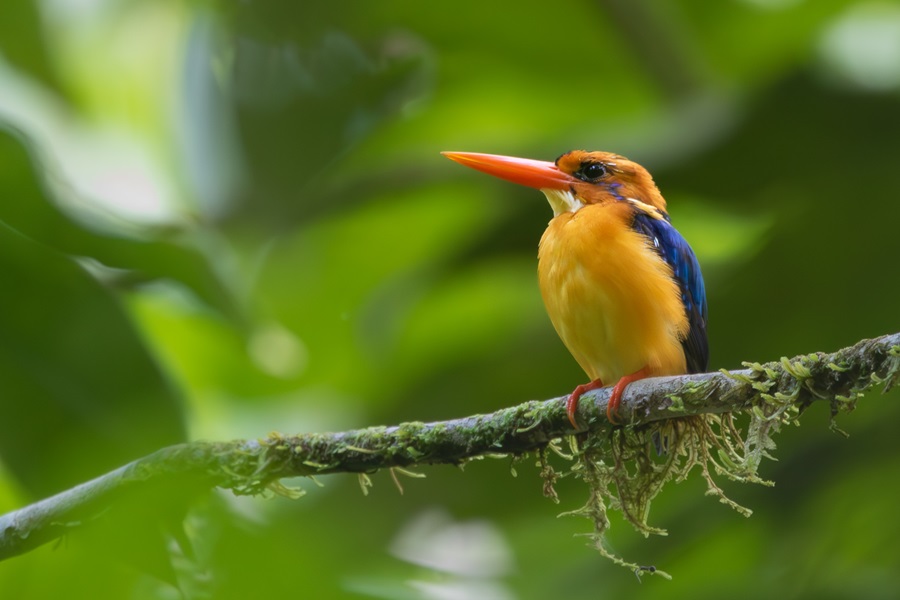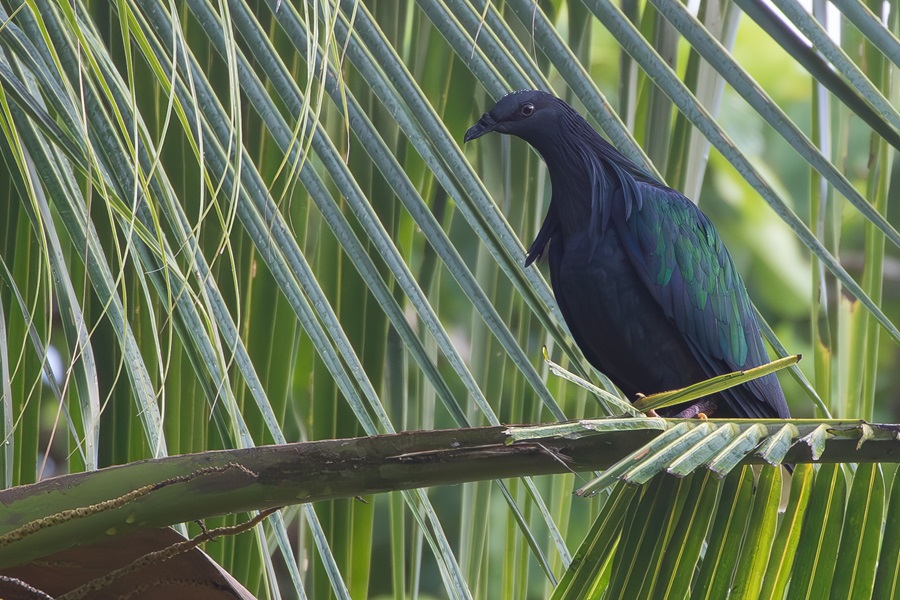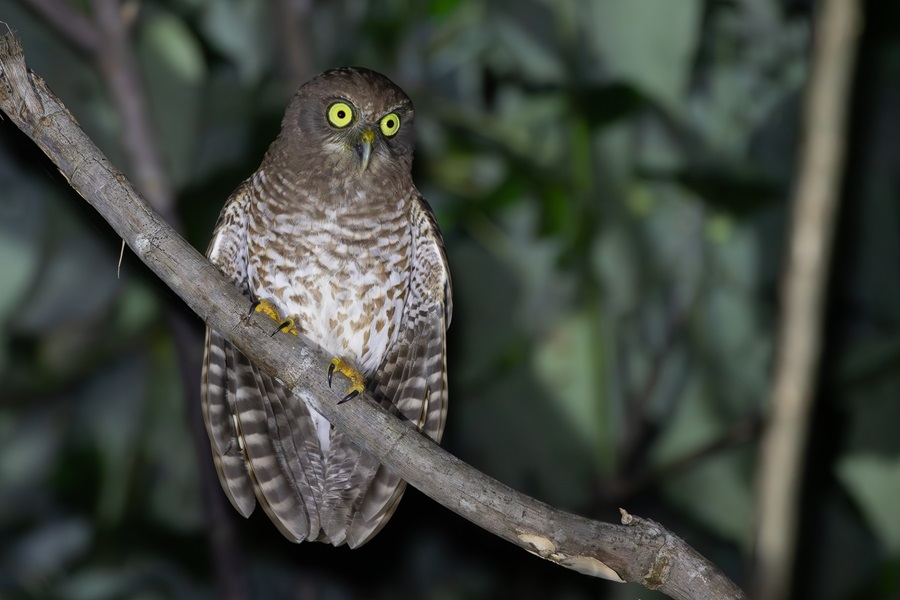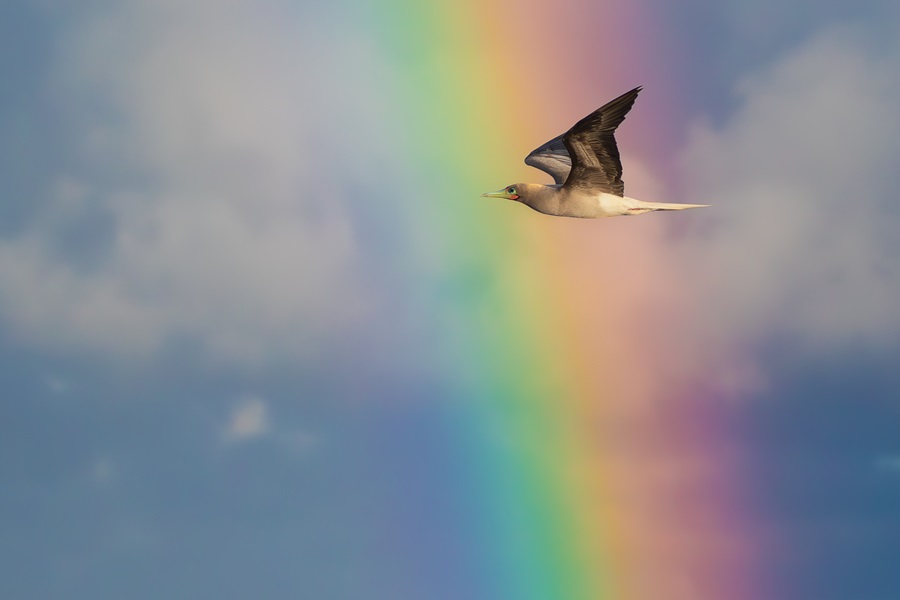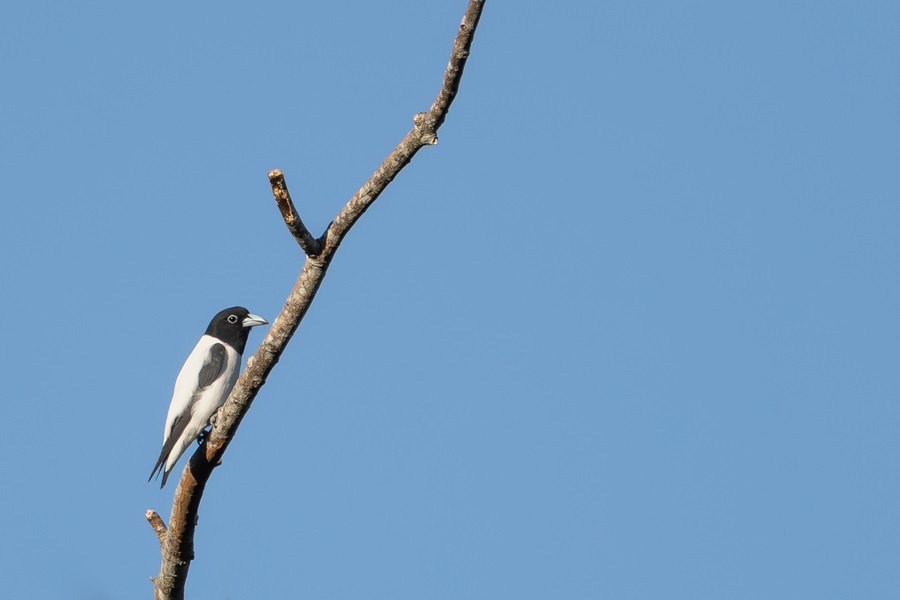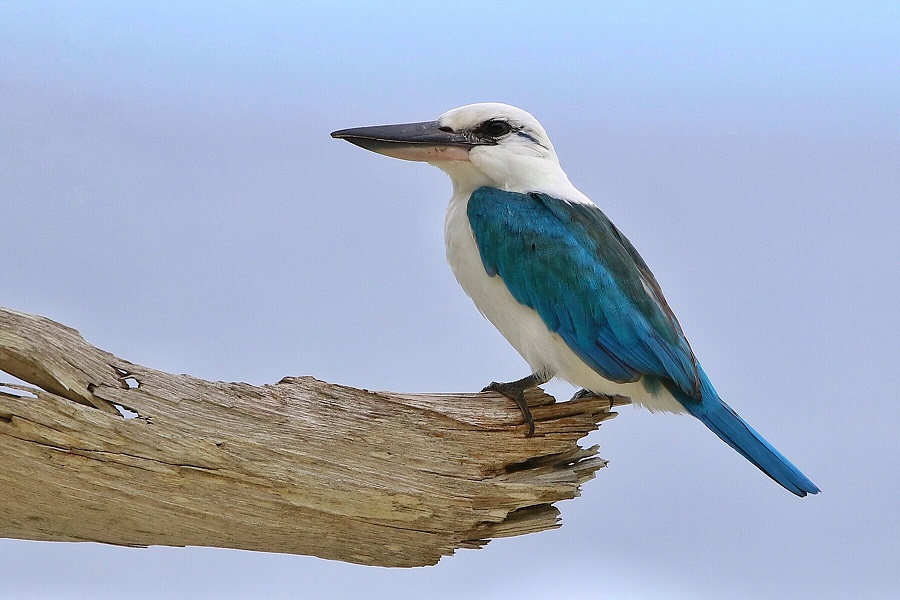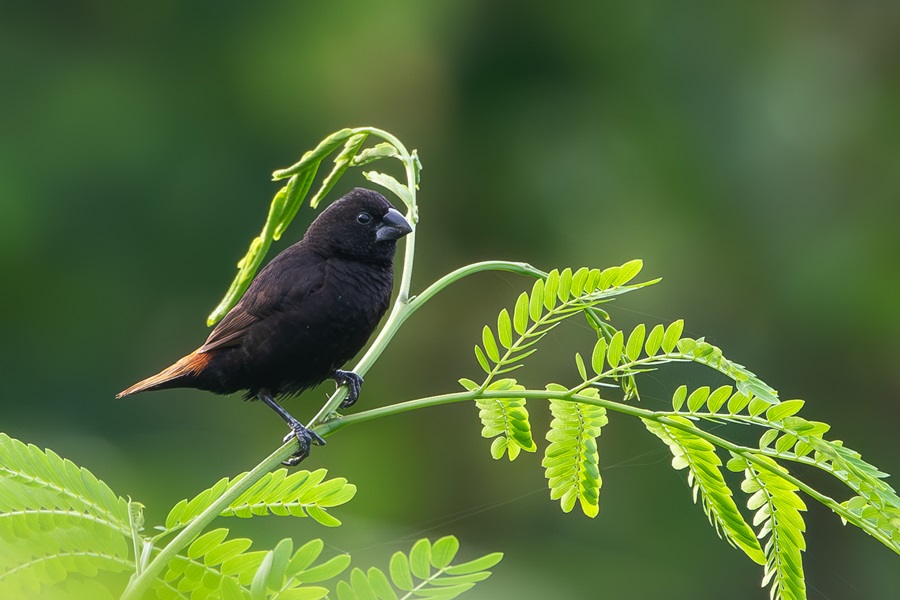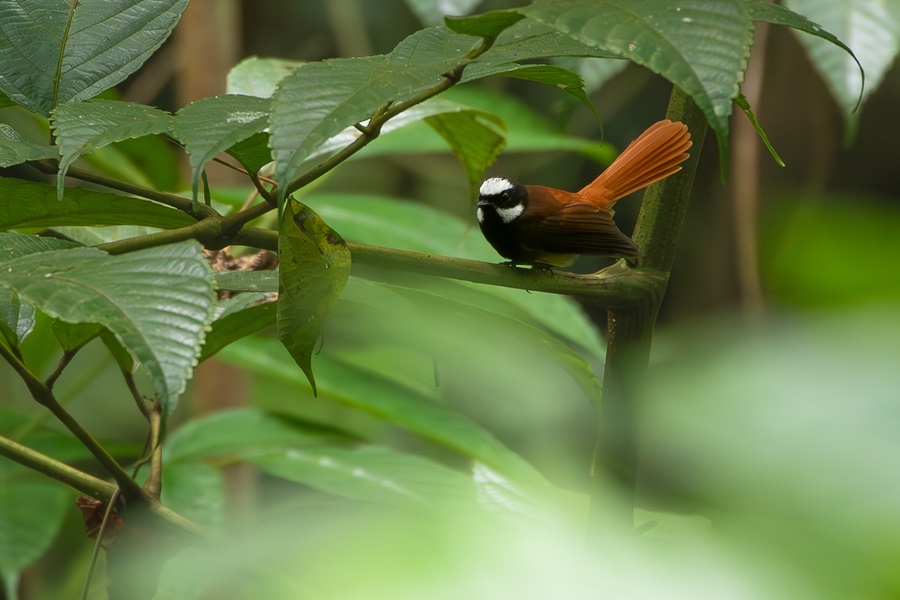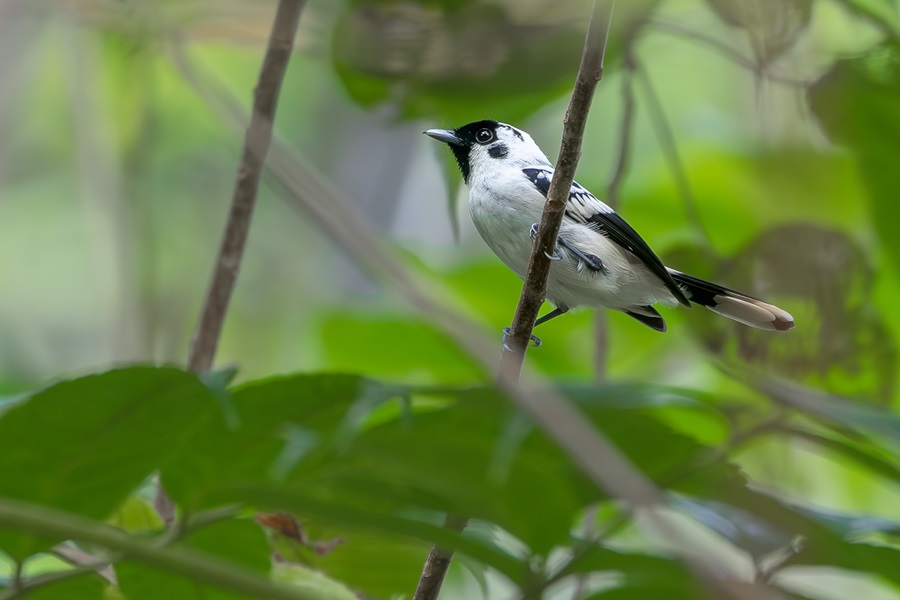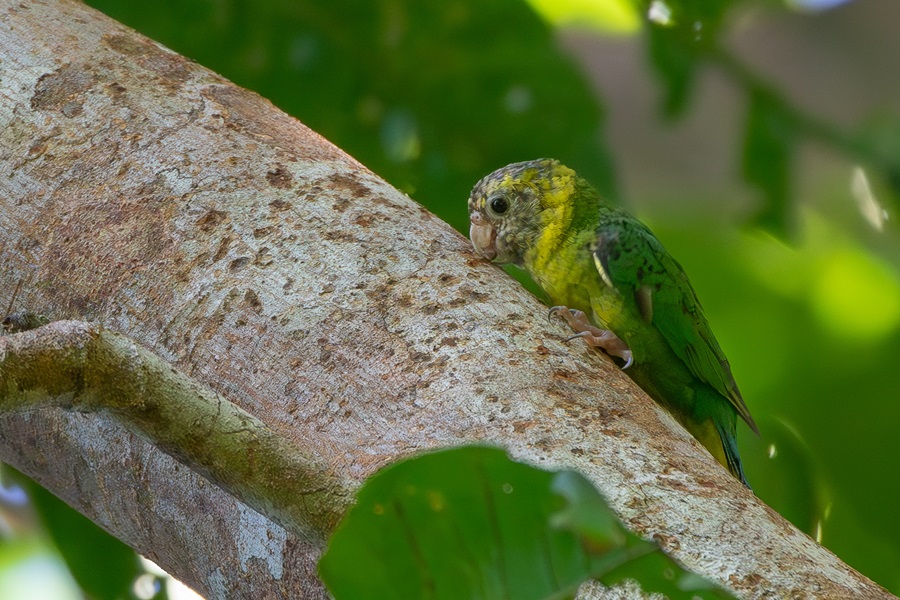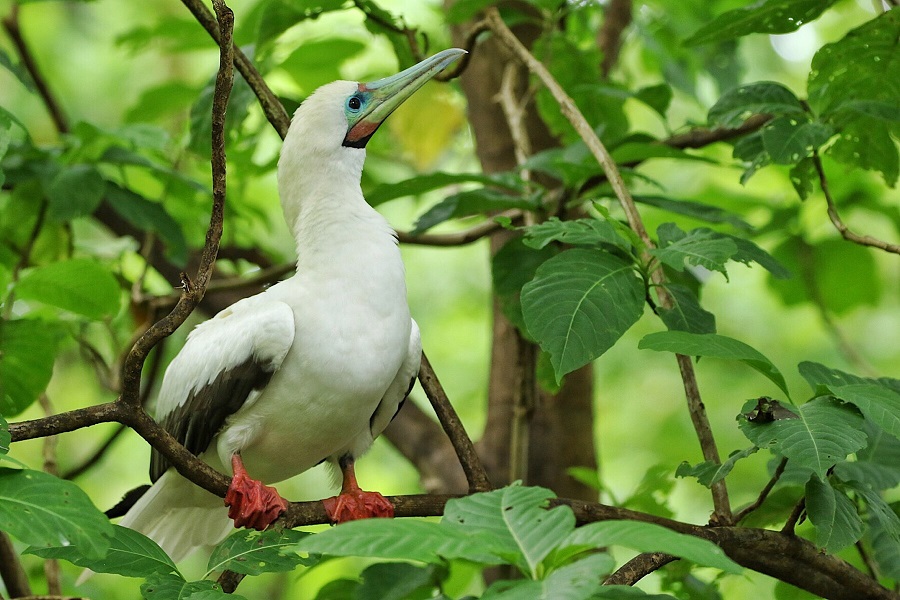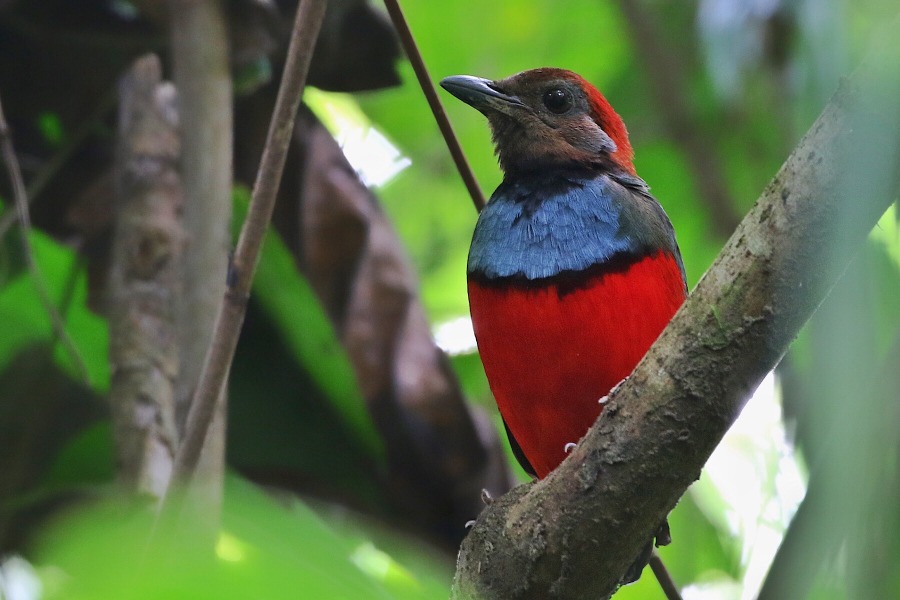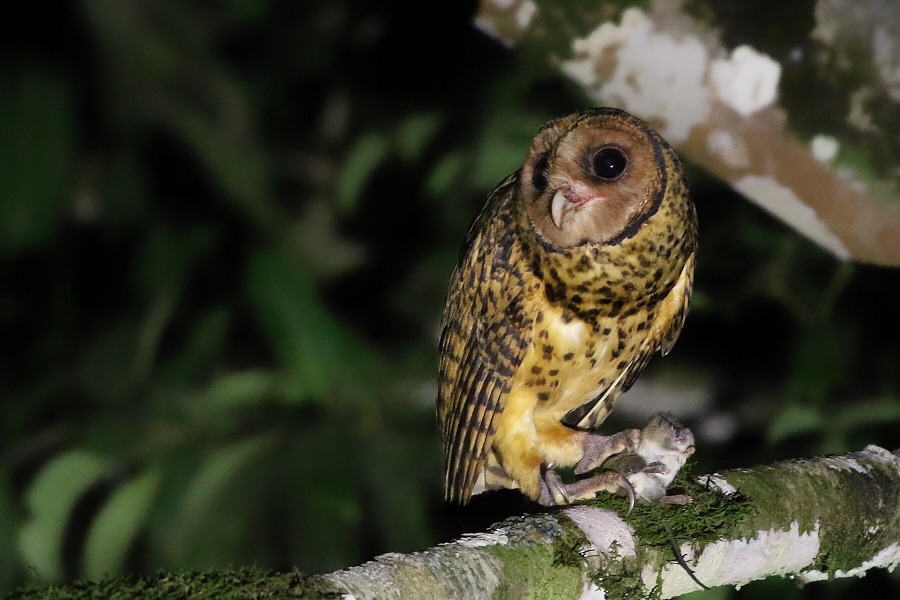Papua New Guinea: Islands
Comprehensively explore the archipelagos east of New Guinea, cruising on a comfortable liveboard boat. We visit Normanby for the endemic Goldie's Bird-of-paradise and Curl-crested Manucode, plus the remote outer Louisiades hosting several endemics like Tagula Butcherbird, Louisiade Pitta, and Rossel Paradise Kingfisher. We spend one evening in Silur Bay where the enigmatic Beck's Petrel should appear as they prepare to visit their nests, before focusing on the specialties of New Ireland, Tench, Mussau, and Manus, including the exquisite Superb Pitta, Black Imperial Pigeon, Paradise Drongo, Atoll Starling, stunning Nicobar Pigeon, and beautiful Mussau Fantail. All up, we should record more than 75 Admiralty / Bismarck / Louisiade / Melanesian species on the main tour, making this the most endemic-rich birding cruise in the world!
Next Dates
20 June - 10 July 2027 (21 days)
Leaders:
Julien Mazenauer
Group Size Limit:
12
Single Room Supplement: $
500 USD
Deposit: $
1500 USD
Price: $
15800 USD
10 July - 14 July 2027 (5 days)
Leaders:
Julien Mazenauer
Group Size Limit:
12
Single Room Supplement: $
TBD
Deposit: $
750 USD
Price: $
TBD
New Britain Extension
10 June - 30 June 2028 (21 days)
Leaders:
Chris Venetz
Group Size Limit:
12
Single Room Supplement: $
500 USD
Deposit: $
1500 USD
Price: $
16500 USD
30 June - 4 July 2028 (5 days)
Leaders:
Chris Venetz
Group Size Limit:
12
Single Room Supplement: $
TBD
Deposit: $
750 USD
Price: $
TBD
New Britain Extension
The single supplement refers only to the land-based nights of this tour. The boat has twin or double rooms, and a roommate will be randomly allocated upon departure if you do not have a friend or partner with whom to share. Please contact us directly for a quote if you are interested in paying extra to have an entire room to yourself whilst on board the boat.
Accommodation:
Comfortable liveaboard boat with air conditioning for most of the tour, with nights in Alotau, Lorengau, and on New Britain during the extension all at comfortable hotels. The single supplement includes a single room on the boat.
Walking difficulty:
Much of this tour is physically easy (more so than our standard Papua New Guinea: Mainland tour) with short and mostly flat walks, though with the occasional muddy trail and wet landing. We will likely opt to do some exploration on both New Ireland and Mussau once the easier endemics have been found, and those who wish to join will undertake some longer walks (or very bumpy and cramped vehicle rides) up logging roads.
Tour cost includes:
All accommodation, main meals, drinking water, internal flights (as stated in itinerary), overland transport, tips to local drivers and guides, travel permits, entrance fees, and guide fees.
Tour cost excludes:
Flights before and after the tour start/end, visa, travel insurance, tips to tour leaders, laundry, drinks, and other items of a personal nature.


Day 1: Morning tour start at Port Moresby airport (POM). Flight to Alotau and afternoon birding in search of Orange-fronted Fruit-Dove, the range-restricted Silver-eared Honeyeater, and attractive eastern form of Chestnut-breasted Mannikin, all of which can be found around our hotel! Night in Alotau.
Day 2: Boarding our comfortable liveaboard dive boat with air condition rooms, this morning we sail towards Normanby Island in the D’Entrecasteaux Archipelago.
Day 3: Arriving overnight at a secluded bay, we will make our way ashore and spend all day birding lowland forest. The gorgeous Goldie’s Bird-of-Paradise and the bizarre Curl-crested Manucode will be our main targets, along with the recently-split but very distinct Ochre-bellied Kingfisher and Louisiade Imperial Pigeon. We should keep an eye out for the splittable vicinus Claret-breasted Fruit Dove, and be able to enjoy our first sightings of Purple-bellied Lory. A few bonuses may include vittatum Grey-headed Cicadabird or meeki Pygmy Longbill. Others like Puff-backed Honeyeater, Spectacled Longbill, and Variable Shrikethrush are also possible.
Day 4: After another morning session on Normanby, we sail east to arrive at a series of tiny islands in the late-afternoon. We should have time to take a short snorkelling session at the excellent coral reef next to our anchorage, or otherwise do this tomorrow morning after birding.
Day 5: Going ashore at dawn, we'll have plenty of time to enjoy several tramp species which are endemic to this region: Islet Kingfisher, White-chinned Myzomela, Louisiade Whistler, Louisiade Fantail, Louisiade Monarch, and Louisiade White-eye. Afterwards, we continue eastwards to the outer Louisiade Archipelago.
Day 6-7-8-9: Few foreigners have visited these remote islands, but we have been warmly welcomed on previous trips! The exact itinerary for these days will depend on weather and success with targets, but we will start with the largest island in the region, Sudest. Most of the Louisiade endemics can be found here (including the tramp species targeted on Day 5), but in particular we will be searching for the attractive Tagula Butcherbird, Tagula Meliphaga, Tagula Shrikethrush, Louisiade Flowerpecker, and the scarce Tagula White-eye. Undervisited and understudied, many of the subspecies here could well prove to be distinct species in the future. The endemic Glossy-mantled Manucode subspecies here has a completely different call to elsewhere in New Guinea, while the plumages of the local Northern Fantail and Double-eyed Fig Parrot look quite distinct indeed.
Slightly further east lies the island of Rossel, where we will be in search of Rossel Paradise Kingfisher, Louisiade Pitta, and Rossel Cicadabird, being amongst the first birdwatchers to look for these species in this out-of-the-way place. A number of endemic subspecies can also be found on Rossel, the most alluring being the distinct form of White-bellied Whistler, along with a colourful local variant of Louisiade White-eye. After wrapping up our time on Rossel, we will begin the crossing north towards New Ireland.
Day 10-11: At sea en route to New Ireland, we will keep an eye out for both Heinroth's Shearwater and Beck's Petrel. We should see lots of Sooty Tern and maybe a few surprises in this rarely-visited patch of ocean.
Day 12: This evening we will reach Silur Bay on the remote south-eastern end of New Ireland. This is the place to see Beck's Petrel, with birds staging in the bay at dusk before flying up to their nesting grounds in the high mountains after dark.
Day 13-14: Two full days to explore the lowland and hill forests of New Ireland, being met each morning by specialised 4WD vehicles which will allows us to reach some tricky places! On the Lelet Plateau, we will walk along the road in search of endemics like Reddish Myzomela, New Ireland Myzomela, Grey-capped Cicadabird, and the undescribed but quite common “Bismarck Flyrobin”. Other specialties include Red-chinned Lorikeet, Song Parrot, Pied Cuckoo-Dove, Knob-billed Fruit Dove, Black Imperial Pigeon, Finsch’s Imperial Pigeon, and the attractive White-backed Woodswallow. We should also encounter Velvet Flycatcher, Black-tailed Monarch, Red-banded Flowerpecker, Bismarck Whistler, Bismarck White-eye, and maybe Bismarck Fantail, all of these much more common here than at accessible sites on New Britain.
In lowland forest, the elegant Paradise Drongo, New Ireland Dwarf Kingfisher, and Bismarck Hanging Parrot are all regular, while grassy areas often hold the endemic Forbes’s Mannikin and Buff-bellied Mannikin. More widespread Melanesian species include Moustached Treeswift, Finsch’s Pygmy Parrot, Yellowish Imperial Pigeon, Stephan’s Ground Dove, White-bibbed Fruit Dove, Red-knobbed Imperial Pigeon, White-necked Coucal, Melanesian Kingfisher, Long-tailed Myna, and Bismarck Crow. We will stay late one evening and make sure to find New Ireland Boobook, plus maybe some roosting birds if we are lucky.
New Ireland Friarbird and White-naped Lory usually favour higher altitudes than we can access, and Bismarck Kingfisher is an exceedingly rare species, but we will try our best to search for these if we see everything else in good time. There is also a real chance to see the almost entirely unknown New Britain Sparrowhawk (confusingly found on New Ireland too).
Day 15: At the northern tip of New Ireland this morning, we'll look for the endemic Mottled Mannikin around Kavieng and maybe explore some other patches of forest if we are still looking for any specialties (New Ireland Dwarf Kingfisher and Bismarck Pitta can both be tricky). Then in the afternoon we will land on the adjacent island of New Hanover, where the recently-split New Hanover Mannikin can easily be found around Taskul. Overnight, we sail north.
Day 16: Waking at dawn to the seabird spectacle that is Tench, we will have time to circumnavigate the tiny island on foot, marvelling at the astounding density of Nicobar Pigeon and Melanesian Scrubfowl! The very range-restricted Atoll Starling is a star bird here (known only from eight tiny islets in Melanesia!), along with the islet-loving Bismarck Black Myzomela, hulking Beach Kingfisher, Yellow-bibbed Fruit-Dove, Pacific Imperial Pigeon, and Island Monarch. Of course, throughout our time on the island, we will be constantly side-stepping Red-footed and Brown Boobies, with Black Noddies, Common White Terns, Great Frigatebirds, and White-tailed Tropicbirds above, all in a breeding frenzy.
Day 17: The next day, we will wake up anchored next to the remote and rarely-visited Mussau, where there are four imaginatively-named endemic birds to find: Mussau Fantail, Mussau Monarch, Mussau Flycatcher, and (hopefully) the extremely poorly-known Mussau Triller. We should also encounter the local forms of Russet-tailed Thrush and Island Leaf Warbler, with White-rumped Swiftlet, Mackinlay's Cuckoo-Dove and Blue-faced Parrotfinch all astoundingly common.
Day 18: After sailing for most of the night and morning, we'll visit Tong in the afternoon. This small island to the east of Manus has a high density of the lovely Manus Fantail, which mysteriously went extinct on the main island sometime after 1934. The endemic mattihae Melanesian Kingfisher and coultasi Manus Monarch are also fairly easy to see here. Once done, we'll continue to Manus itself and enjoy our final meal on board while eagerly anticipating our coming morning with the star bird of the region!
Day 19-20: Manus Island holds nine gettable endemics, of which the near-legendary Superb Pitta will be our most-wanted quarry. Sporting contrasting black, red, and turquoise plumage, many regard this species as the most beautiful pitta in the world! The other specialties we will find here are Meek’s Pygmy Parrot, Manus Boobook, Manus Dwarf Kingfisher, Manus Brush Cuckoo, Manus Cuckooshrike, Admiralty Cicadabird, Manus Friarbird, and Manus Monarch. Manus Masked Owl has not been seen since the 1930s, but we might try our luck anyway! Two endemic mammals are quite easy to see whilst spotlighting here: Admiralty Cuscus and Admiralty Flying Fox. Nights on Manus Island at comfortable hotel in Lorengau.
Day 21: Mid-morning flight to Port Moresby (POM), where the main tour ends. Those continuing on the extension will take a connecting flight onwards to Hoskins on New Britain.
NEW BRITAIN EXTENSION
Day 1: Onward flight from Port Moresby to Hoskins on New Britain.
Day 2-3-4: Many tour participants may have visited New Britain on a previous PNG tour, but if you have not been it is a much-needed addition to our islands circuit. Staying at the fabulous Walindi Dive Resort, we can expect to add another dozen Bismarck endemics which are not possible on the main tour.
The most spectacular bird here is the recently rediscovered Golden Masked Owl, which is now known to be quite common in the nearby palm oil plantations where they hunt for rats and mice at night. We will not need to search for species already seen on New Ireland, so expect to have plenty of time to focus on some of the harder endemics and specialties like Pink-legged Rail, Eastern Bronze Ground-Dove, and Black Honeybuzzard.
Easier to find will be our primary targets: Black-capped Paradise Kingfisher, White-mantled Kingfisher, New Britain Dwarf Kingfisher, Ashy Myzomela, Black-bellied Myzomela, and New Britain Friarbird. Others like Violaceous Coucal and Buff-faced Pygmy Parrot are easy to see here, while the noisy endemic Blue-eyed Cockatoo is one of the most conspicuous parrots. In the evening, strikingly large Great Flying Foxes can be seen flapping and gliding lazily overhead while we search for New Britain Boobook.
On one morning, we will take a short boat trip out into Kimbe Bay, stopping by Restorff Island, where the islet specialty Sclater’s Myzomela is common, along with Mangrove Golden Whistler. We highly recommend a few hours snorkelling here, since Kimbe plays host to some of the best coral reefs in the world.
Day 5: Today we return to Port Moresby (POM), where the extension ends.

